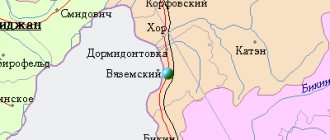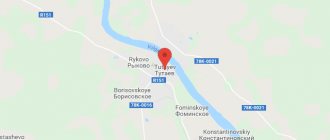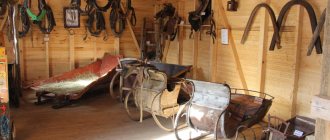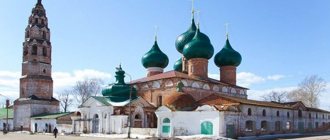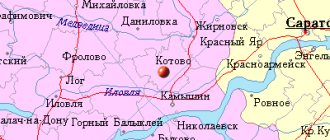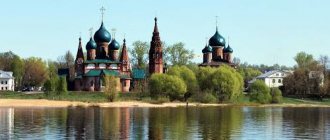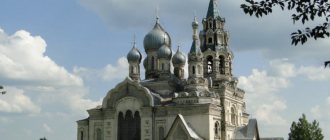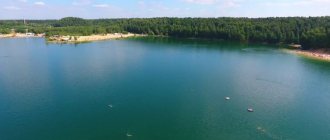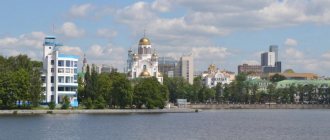Acceptance date:
25.01.2008
In a scarlet field there are seven golden ears of wheat (the middle one in a column, three on each side of it in a fan shape), the stems of which are entwined with azure ribbons, standing on a golden ring half extending from below, filled with azure.
Approved by the Decision of the Municipal Council of the rural settlement of Semibratovo dated January 25, 2008 No. 136
The coat of arms of the rural settlement of Semibratovo reflects geographical, historical and cultural features in the language of symbols. All figures in the composition have multi-valued symbolism. Seven ears of corn entwined with three azure ribbons mean that seven territories are united to resolve issues of local importance to the population. The center is the working village of Semibratovo and six rural territories - Moseytsevskaya, Novo-Nikolskaya, Semibratovskaya, Sulotskaya, Tatishchevskaya and Ugodicheskaya. The blue ribbons with which the ears are intertwined show the main enterprises of Semibratovo. Seven is a magical, magical number, a sign of perfection, order and completeness. Interest in this number is reflected in the sayings: “seven troubles - one answer”, “measure seven times - cut once” and others. The ear is a symbol of growth and renewal. Three blue ribbons with which the ears are entwined allegorically indicate three rivers - Ustye, Kotorosl and Vyoksu. The Ustye River near the village of Semibratovo turns sharply to the south and then merges with Kotorosl. The Vyoksa River flows out of Lake Nero and seven kilometers after the source merges with the Ustye River. Lake Nero itself is shown with the azure that fills the gear. The bends of the ribbons indicate the peculiarities of river flow: fast flow, wandering channel, which continuously bends, often branching into branches, forming floodplain islands. This feature of the rivers became the basis for the construction of Isad mills on them in the vicinity of modern Semibratov, which is shown in the coat of arms with a golden gear. Blue ribbons also indicate the main enterprises: gas purification equipment factories, a branch of the Research Institute of Industrial and Sanitary Cleaning (NIIOGAZ). Azure (blue) is a symbol of lofty aspirations, truth, honor, sincerity, virtue, clear skies and expanses of water. The golden gear has multiple symbolism. It symbolizes: - a water mill; - highway and Northern railway running through Semibratovo; - tourist route “Golden Ring of Russia”, passing through Semibratovo, which is reflected in the gold gear. Gold symbolizes wealth, justice, respect, generosity, loftiness of thought, nobility and dignity. The red field of the coat of arms allegorically shows the history of the settlement during the Great Patriotic War. The anti-aircraft battery did not allow the enemy to interrupt the supply of our troops, carried out along the railways and roads passing through Semibratovo. In the center of the village of Moseytsevo there is a mass grave of Soviet pilots. The crew of the plane that crashed in these parts in the summer of 1942 is buried here. Red color is the color of activity, sun, energy, symbolizes love, courage, boldness, generosity, as well as blood shed for faith and the fatherland.
Semibratovo is an urban-type settlement (since 1948) in the Rostov district of the Yaroslavl region of Russia. Located on the left bank of the Ustye River (Volga basin), on the Kholmogory federal highway (Moscow - Arkhangelsk). There is a railway station of the same name in the village. The distance from Semibratov to Rostov is 16 km, to Yaroslavl - 37 km, to Moscow - 218 km. Basically, the village is built up with five-story houses with all amenities, has a clear urban layout, and is surrounded by a green ring of cooperative gardens. The population according to the 2010 census is 7097 people - the largest urban village in the Yaroslavl region.
The oldest settlement on the territory of the modern village of Semibratovo is the village of Isady: in V. Dahl’s dictionary, in addition to “fish settlement” and “trading pier,” the word “isady” is explained as “landing place on the shore.” There are several versions of the origin of the name “Semibratovo”. One of the options for the emergence of the settlement of Semibratovo is described by local historian A. A. Titov, using information received from A. Ya. Artynov: On the map of the Russian state from the book of the Dutch merchant Isaac Massa (1587-1635) “Brief news about Muscovy at the beginning of the 17th century. » the village of Semibratov was listed. In 1693, by decree of Peter I, a postal service was established between Moscow and Arkhangelsk, and the Semibratovskaya postal station appeared. The name “Semibratovo” also remained behind the railway station, built in 1870. On June 11, 1948, a Decree of the Presidium of the Supreme Council of the RSFSR was issued: on January 5, 1930, on the basis of the former Isad potato plant and the preceding Isad water mill of the merchant Vakhrameev, the Semibratovsky thermal insulation plant began work, producing insulating material - shevelin, used in car building. Since 1949, the plant has been reconstructed. In 1959, the production of fiberboard and particle boards was mastered, used in the construction of buildings for their interior decoration - hence the second name - Semibratovsky Fiberboard Plant. Doesn't exist now. In 1950, the Semibratovsky gas purification equipment plant was included in the operating enterprises of the Gazoochistka trust. During the Great Patriotic War, railways and roads carried supplies and reinforcements from the north to the Soviet troops defending the capital from the enemy. Considering that the distance between the two bridges over the Ustya River is about 70 meters, the Luftwaffe tried to interrupt this supply with bomb attacks, but the anti-aircraft battery defending the bridges did not allow this. Since 2005, the village of Semibratovo has been the center of the rural settlement of Semibratovo, which includes the rural formations of Moseytsevo, Ugodichi, Sulost, Novo-Nikolskoye, Tatishchev-Pogost.
Economy
The main enterprises of the village: OJSC FINGO (formerly Semibratovsky Gas Purification Equipment Plant), CJSC SF NIIOGAZ (Semibratovskaya), CJSC Condor...
Story
The oldest settlement on the territory of the modern village of Semibratovo is the village of Isady: in V. Dahl’s dictionary, in addition to “fish settlement” and “trading pier,” the word “isady” is explained as “landing place on the shore.”
There are several versions of the origin of the name “Semibratovo”. One of the options for the emergence of the settlement of Semibratovo is described by local historian A. A. Titov, using information received from A. Ya. Artynov:
Semibrats are mentioned in chronicles of the 14th and 15th centuries. Near this village, on the border between the princes Gvozdev and Priimkov, lived “seven rabble brothers” - the sons of Prince Vasily Kosoy-Tertyak Andreev, who became famous in that era of princely civil strife for his restless character. Their adventures served as the basis for the fairy tale “About the Seven Siblings.” During the reign of the Seven Brothers, Vasily Vasilyevich the Dark was defeated by his uncle, Prince Yuri Dmitrievich. Around 1460-70 Semibrats was owned by Prince Fyodor Dmitrievich Gvozd.
On the map of the Russian state from the book of the Dutch merchant Isaac Massa (1587-1635) “Brief news about Muscovy at the beginning of the 17th century.” the village of Semibratov was listed.
In 1693, by decree of Peter I, a postal service was established between Moscow and Arkhangelsk, and the Semibratovskaya postal station appeared. The name “Semibratovo” also remained behind the railway station, built in 1870.
“To classify the settlement of Isady, Rostov district, Yaroslavl region, as a working settlement, giving it the name Semibratovo working settlement. Include in the working village of Semibratovo the villages at the Semibratovo railway station, the timber rafting site and the construction of a gas purification equipment plant and the Krasny Bor and Podrechnevo farms.”
On January 5, 1930, on the basis of the former Isad potato plant and the preceding Isad water mill of the merchant Vakhrameev, the Semibratovsky thermal insulation plant began work, producing insulating material - shevelin, used in carriage building. Since 1949, the plant has been reconstructed. In 1959, the production of fiberboard and particle boards was mastered, used in the construction of buildings for their interior decoration - hence the second name - Semibratovsky Fiberboard Plant. Doesn't exist now.
In 1950, the Semibratovsky gas purification equipment plant was included in the operating enterprises of the Gazoochistka trust.
During the Great Patriotic War, railways and roads carried supplies and reinforcements from the north to the Soviet troops defending the capital from the enemy. Considering that the distance between the two bridges over the Ustya River is about 70 meters, the Luftwaffe tried to interrupt this supply with bomb attacks, but the anti-aircraft battery defending the bridges did not allow this.
Since 2005, the village of Semibratovo has been the center of the rural settlement of Semibratovo, which includes the rural formations of Moseytsevo, Ugodichi, Sulost, Novo-Nikolskoye, Tatishchev-Pogost.
But it’s not easy to beat your thumbs!
What is a buckeye? And this is a wooden blank for any wooden utensils. Well, in this museum we are, of course, talking about a spoon.
Nowadays, in our time, the expression “knuckle down” is most often used in an ironic sense, that is, to sit back and do nothing. And so we, the guests of the museum, were given the opportunity to try to really kick the bucket.
This, as it turns out, is not such a simple matter! We are not used to swinging an ax somehow.
But earlier, in a peasant family, this was entrusted to children from 7 to 12 years old. The boy had to chop about 100 pieces of these blanks a day. And until he does it, he won’t leave the yard! These are the rules!
And now we find ourselves in an improvised Russian courtyard. There is a hut nearby and a well nearby. And a whole mountain of wood. That's how many spoons you can make if you're not lazy!
How fortunate that the age of my nephews exactly corresponded to the stories of the guide. And the boys got to work with pleasure.
At first they had to chop wood. How much pleasure you can get holding an ax in your hands or using a special guillotine device that breaks logs in half with noise and noise.
Next, in the resulting chock, an ax and other tools were used to make a blank that already resembled a spoon. It was she who was called the baklusha.
In order for the carved spoon to be smooth, it had to be sanded. This was done by women. We were shown a machine that had been used before and were allowed to try our hand at this.
To be honest, it didn’t work out right away. Everything requires skill! And in the corner of the room there was a beautifully painted balalaika! How can a Russian person live without her?!
Famous people
- Brendyuchkov, Konstantin Grigorievich - Soviet writer. Worked at the Semibratovsky Gas Purification Equipment Plant and the SF NIIOGAZ.
- Kolesnikov, Andrey Ivanovich - journalist, author of books about Vladimir Putin. Born in Semibratovo.
- Paskhin, Elena Vasilievna - sculptor, author of a number of monuments in the Yaroslavl region. She studied in Semibratovo.
- Sudarushkin, Boris Mikhailovich - writer. He studied at school, lived and worked in Semibratovo. Author of a book about him and editor of the village newspaper.
Links
| Subject of the federation |
| Municipal district |
| Rural settlement |
| Coordinates |
| First mention |
| PGT with |
| Population |
| Timezone |
| Telephone code |
| Postcode |
| Vehicle code |
| OKATO code |
| Rostov district of Yaroslavl region | |
| Urban settlements | |
Introduction
Semibratovo
- an urban-type settlement in the Rostov district of the Yaroslavl region of Russia.
Located on the left bank of the Ustye River (Volga basin), on the Kholmogory federal highway (Moscow - Arkhangelsk). Railway station of the Northern Railway on the Moscow - Yaroslavl line. From the Semibratovo railway station (station code: 314400) there is a branch (20 km) to Gavrilov-Yam.
The distance from Semibratov to Rostov is 16 km, to Yaroslavl - 37 km, to Moscow - 218 km.
Basically, the village is built up with five-story houses with all amenities, has a clear urban layout, and is surrounded by a green ring of cooperative gardens.
The permanent population as of January 1, 2010 is 7,130 people - the largest urban settlement in the Yaroslavl region.
Story
Semibratovo and its environs, from the “Atlas of the Yaroslavl province” of 1858
The oldest settlement on the territory of the modern village of Semibratovo is the village of Isady: in V. Dahl’s dictionary, in addition to “fish settlement” and “trading pier,” the word “isady” is explained as “landing place on the shore.”
There are several versions of the origin of the name “Semibratovo”. One of the options for the emergence of the settlement of Semibratovo is described by local historian A. A. Titov, using information received from A. Ya. Artynov:
Semibrats are mentioned in chronicles of the 14th and 15th centuries. Near this village, on the border between the princes Gvozdev and Priimkov, lived “seven rabble brothers” - the sons of Prince Vasily Kosoy-Tertyak Andreev, who became famous in that era of princely civil strife for his restless character. Their adventures served as the basis for the fairy tale “About the Seven Siblings.” During the reign of the Seven Brothers, Vasily Vasilyevich the Dark was defeated by his uncle, Prince Yuri Dmitrievich. Around 1460-70 The Semibrats were owned by Prince Fyodor Dmitrievich Gvozd.
On the map of the Russian state from the book of the Dutch merchant Isaac Massa (1587-1635) “Brief news about Muscovy at the beginning of the 17th century.” the village of Semibratov was listed.
In 1693, by decree of Peter I, a postal service was established between Moscow and Arkhangelsk, and the Semibratovskaya postal station appeared. The name “Semibratovo” also remained behind the railway station, built in 1870.
The building of the railway station of the Semibratovo station after renovation
View of the Ustye River in the village. Semibratovo (bridge of the federal highway "Kholmogory" Moscow - Arkhangelsk)
“To classify the settlement of Isady, Rostov district, Yaroslavl region, as a working settlement, giving it the name Semibratovo working settlement. Include in the working village of Semibratovo the villages at the Semibratovo railway station, the timber rafting site and the construction of a gas purification equipment plant and the Krasny Bor and Podrechnevo farms.”
On January 5, 1930, on the basis of the former Isad potato plant and the preceding Isad water mill of the merchant Vakhrameev, the Semibratovsky thermal insulation plant began work, producing insulating material - shevelin, used in carriage building. Since 1949, the plant has been reconstructed. In 1959, the production of fiberboard and particle boards was mastered, used in the construction of buildings for their interior decoration - hence the second name - Semibratovsky Fiberboard Plant. Doesn't exist now.
In 1950, the Semibratovsky gas purification equipment plant was included in the operating enterprises of the Gazoochistka trust.
During the Great Patriotic War, railways and roads carried supplies and reinforcements from the north to the Soviet troops defending the capital from the enemy. Considering that the distance between the two bridges over the Ustya River is about 70 meters, the Luftwaffe tried to interrupt this supply with bomb attacks, but the anti-aircraft battery defending the bridges did not allow this.
Since 2005, the village of Semibratovo has been the center of the rural settlement of Semibratovo, which includes the rural formations of Moseytsevo, Ugodichi, Sulost, Novo-Nikolskoye, Tatishchev-Pogost.
Local sweet tooths and slackers
Another attraction of Semibratovo is the “Bear Corner”. In the courtyard of the museum house there is a large cage with two cubs.
These bears are shown to visiting tourists for extra money. To increase the entertainment value of this show, they are fed meat from the top floor.
Bears are very quick and easily climb almost to the very window, which is located on the second floor, in order to be closer to their prey. And tourists watch this process with pleasure.
After this, the bears calm down a little and begin to beg from the audience. And they do it professionally and very funny.
Famous people
- Brendyuchkov, Konstantin Grigorievich - Soviet writer. Worked at the Semibratovsky Gas Purification Equipment Plant and the SF NIIOGAZ.
- Kolesnikov, Andrey Ivanovich - journalist, author of books about Vladimir Putin. Born in Semibratovo.
- Paskhin, Elena Vasilievna - sculptor, author of a number of monuments in the Yaroslavl region. She studied in Semibratovo.
- Sudarushkin, Boris Mikhailovich - writer. He studied at school, lived and worked in Semibratovo. Author of a book about him and editor of the village newspaper.
Notes
- 1 2
Resident population of the Russian Federation by cities, urban-type settlements and districts as of January 1, 2010 - www.gks.ru/bgd/regl/b10_109/IssWWW.exe/Stg// / ::|tabl-23-10 .xls.
Rosstat - Artynov-Titov's version - sudar-mb.narod.ru/semib/main/page1_2.htm // sudar-mb.narod.ru
- Tyunina M.
Rostov Yaroslavsky (guide to the city and surrounding area). - Yaroslavl, 1979. - pp. 193-194.
| Flag of Semibratovo | |
| A country | Russia |
| Subject of the federation | Yaroslavl region |
| Municipal district | Rostovsky |
| Rural settlement | Semibratovo |
| Telephone code | +7 48536 |
| Postcode | 152101 |
| Coordinates | Coordinates: 57°18′00″ N. w. 39°31′00″ E. long / 57.3° north w. 39.516667° E. d. (G) (O) (I) 57°18′00″ n. w. 39°31′00″ E. long / 57.3° north w. 39.516667° E. d. (G) (O) (I) |
| PGT with | 1948 |
| Population | 7097 people (2010) |
| Timezone | UTC+4 |
| OKATO code | 78 237 559 |
| First mention | 15th century |
| Vehicle code | 76 |
Semibratovo is an urban-type settlement in the Rostov district of the Yaroslavl region of Russia.
Located on the left bank of the Ustye River (Volga basin), on the Kholmogory federal highway (Moscow - Arkhangelsk). Railway station of the Northern Railway on the Moscow - Yaroslavl line. From the Semibratovo railway station (station code: 314400) there is a branch (20 km) to Gavrilov-Yam.
The distance from Semibratov to Rostov is 16 km, to Yaroslavl - 37 km, to Moscow - 218 km.
Basically, the village is built up with five-story houses with all amenities, has a clear urban layout, and is surrounded by a green ring of cooperative gardens.
The population according to the 2010 census is 7097 people - the largest urban village in the Yaroslavl region.
Summary statistics for Semibratov
Summary statistics of the total number of houses built in Semibratov, indicating the total area by year.
| Year of construction | Total area | Number of houses | Number of apartments | Living space | Non-residential area | Non-residential premises |
| 2004 | 1774 | 1 | 40 | 1774.00 | 0.00 | 0 |
| 2003 | 2773 | 1 | 60 | 2773.00 | 0.00 | 0 |
| 1995 | 1300 | 1 | 24 | 1300.00 | 0.00 | 0 |
| 1993 | 3562 | 1 | 75 | 3562.00 | 0.00 | 0 |
| 1992 | 1710 | 1 | 33 | 1710.00 | 0.00 | 0 |
| 1990 | 4784 | 1 | 105 | 4784.00 | 0.00 | 0 |
| 1989 | 4479 | 2 | 93 | 4479.00 | 0.00 | 0 |
| 1985 | 9839 | 2 | 205 | 9839.00 | 0.00 | 0 |
| 1984 | 6699 | 2 | 146 | 6699.00 | 0.00 | 1 |
| 1982 | 6900 | 2 | 133 | 6900.00 | 0.00 | 0 |
| 1980 | 3216 | 1 | 120 | 3216.00 | 0.00 | 0 |
| 1979 | 7375 | 4 | 161 | 7375.00 | 0.00 | 0 |
| 1978 | 4548 | 1 | 100 | 4548.00 | 0.00 | 0 |
| 1976 | 3382 | 1 | 67 | 3199.00 | 183.00 | 1 |
| 1974 | 6716 | 2 | 140 | 6716.00 | 0.00 | 0 |
| 1972 | 4439 | 1 | 100 | 4439.00 | 0.00 | 0 |
| 1971 | 9281 | 2 | 200 | 9281.00 | 0.00 | 0 |
| 1970 | 7718 | 2 | 168 | 7718.00 | 0.00 | 0 |
| 1968 | 7606 | 2 | 178 | 7606.00 | 0.00 | 0 |
| 1967 | 1782 | 1 | 40 | 1782.00 | 0.00 | 0 |
Story
The oldest settlement on the territory of the modern village of Semibratovo is the village of Isady: in V. Dahl’s dictionary, in addition to “fish settlement” and “trading pier,” the word “isady” is explained as “landing place on the shore.”
There are several versions of the origin of the name “Semibratovo”. One of the options for the emergence of the settlement of Semibratovo is described by local historian A. A. Titov, using information received from A. Ya. Artynov:
On the map of the Russian state from the book of the Dutch merchant Isaac Massa (1587-1635) “Brief news about Muscovy at the beginning of the 17th century.” the village of Semibratov was listed.
In 1693, by decree of Peter I, a postal service was established between Moscow and Arkhangelsk, and the Semibratovskaya postal station appeared. The name “Semibratovo” also remained behind the railway station, built in 1870.
On January 5, 1930, on the basis of the former Isad potato plant and the preceding Isad water mill of the merchant Vakhrameev, the Semibratovsky thermal insulation plant began work, producing insulating material - shevelin, used in carriage building. Since 1949, the plant has been reconstructed. In 1959, the production of fiberboard and particle boards was mastered, used in the construction of buildings for their interior decoration - hence the second name - Semibratovsky Fiberboard Plant. Doesn't exist now.
Spoon with many faces
Well, after work, we were invited as dear guests to the small room, all decorated with spoons! And there were so many specimens here!
Spoons from Bulgaria, from Korea, from Spain, from China! Even the spoon of an African chief with the face of the gods! Spoon painted with Khokhloma; a huge spoon of barge hauler, called a butyrka.
There was a 2-meter ladle under the ceiling.
And also spoons that perform additional functions: they can be a comb, a thermometer, and even a police wand.
But why double spoons are needed remains a mystery. Apparently, in the old days, some people liked to eat with “two mouths.”
